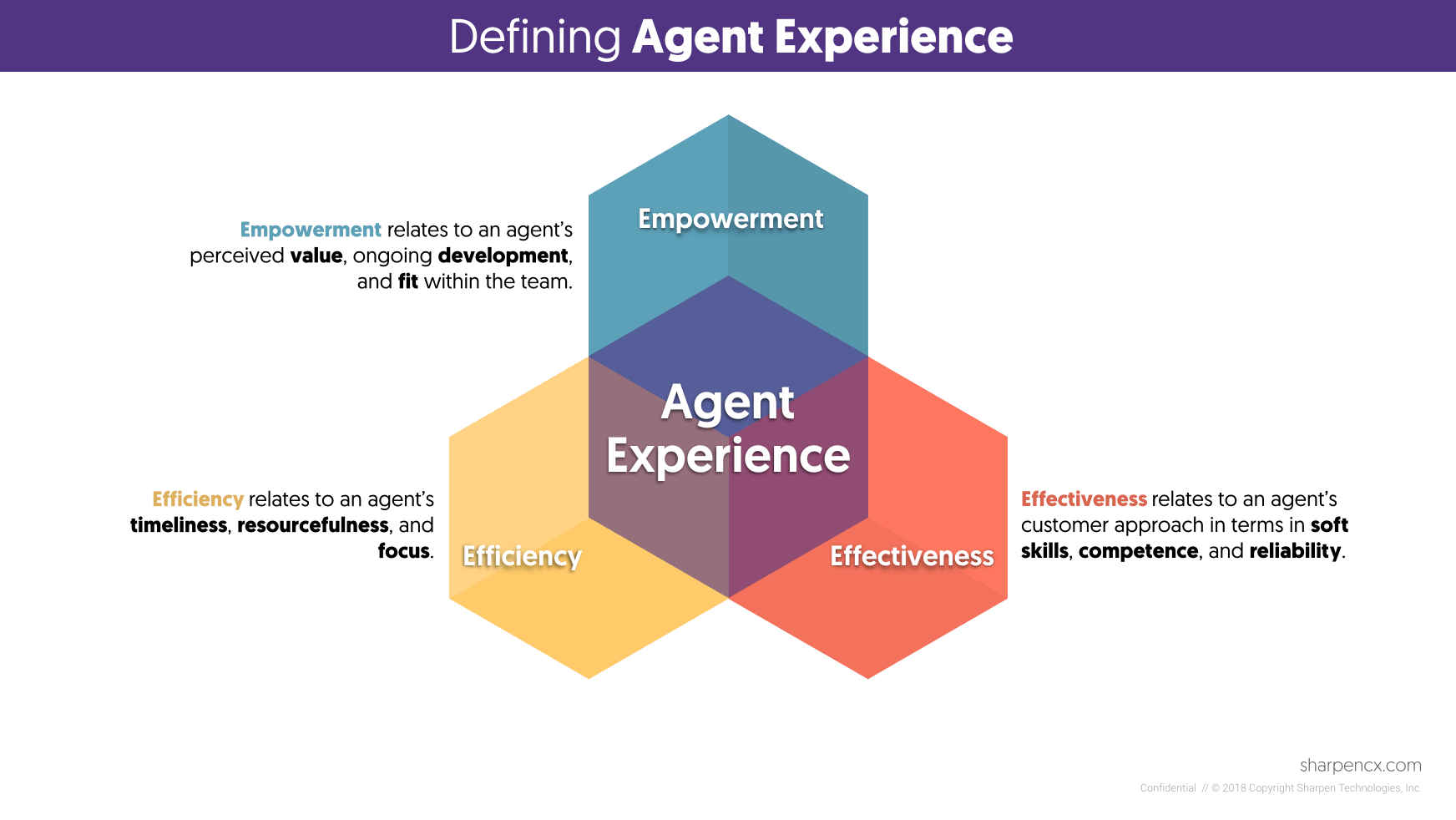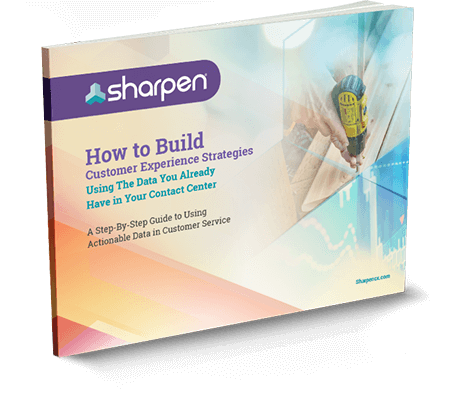
6 Call Center Reporting Metrics That’ll Level Up Your Customer Service
Operations leaders, like you, are in a battle to figure out what to measure and how to keep agents accountable to those metrics. And then, you’re left scratching your heads on how to use your metrics and what you learn about agent performance to create a better customer experience.
Your KPIs have become the pernicious beast of your contact center. They’re always there, stalking over your shoulder, waiting to destroy your effectiveness (and sanity) all in the name of efficiency. Or vice versa.
[Learn More] Use data to develop your agents
You work to keep your productivity metrics sky high and improving month over month. But if you focus too much on numbers, you risk forgetting the humanity of your agents. The pressure to meet impossible KPIs pushes agents to burnout. Or, it causes your team to pay more attention to numbers than customer needs and outcomes.
Either way, focusing too much on your call center reporting metrics – or choosing the wrong metrics – can hurt your customer experience rather than improve it.
The HBR article, Don’t Let Metrics Undermine Your Business, outlined the negative business impacts of giving your metrics too much weight.
“Here’s a common scenario: A company selects “delighting the customer” as a strategic objective and decides to track progress on it using customer survey scores. The surveys do tell managers something about how well the firm is pleasing customers, but somehow employees start thinking the strategy is to maximize survey scores, rather than to deliver a great customer experience.”
– Michael Harris and Bill Tayler
How do you place the right attention on your call center reporting metrics without going overboard?
The answer lies in your agent-focused metrics. A Google search escapade led me to a common question call center leaders ask: What KPIs would you use to rate your customer service agents?
Turns out, contact center leaders are looking to individual performance metrics and agent controllable KPIs as a way to up-level contact center performance.
It makes sense to measure your agents on metrics they can impact rather than those out of their control. So today, we’re looking at KPIs through the lens of agent experience.
Learn the agent controllable KPIs you need to measure to improve agent performance (and those you need to measure to gauge satisfaction & engagement, too). Because if you’re not thinking beyond daily performance management and investing in agent development and happiness, your customer experience will suffer.
What KPIs would you use to rate your customer service agents?
First up, we’re digging into three metrics your agents can control.
They give you a glimpse at how well agents handle customer interactions in the moment, but they’re strictly dedicated to performance management.
1. Average Handle Time
How long, on average, does each agent spend handling a single customer interaction and doing their post-call work? This metric looks at the number of minutes your agent dedicates to a single interaction.
When it comes to customer service, solving customer problems quickly is incredibly important to customers. In fact, 69% of customers judge the quality of their service experience on how quickly they get to a resolution. And, if a customer has to take time out of their day to reach out to your team of agents, chances are high they’re already frustrated. Stalled resolutions or lengthy conversations only heighten those frustrations.
[Read Next] How to run an efficient inbound call center (without the crazy costs)
This metric ensures you have a pulse on how long it takes each agent to wrap up each interaction. Don’t use it to hold your agents to sky-high standards and make sure they’re churning through calls. Instead, use this metric to see where your agents could benefit from new resources or training to speed up conversations that drag on.
2. Average Agent Hold Time
How long does an agent put a customer on hold after answering an interaction? Measure this to see how long agents have to hit the pause button during interactions to help a customer reach a resolution.
Did you know, for 60% of customers, waiting on hold for even one minute is too long? (I plead guilty.) Measuring average agent hold time ensures your agents have the confidence and resources they need to handle interactions without replaying elevator music for your customers.
And, if you find your agents have to pause interactions too often, you can dig into why. Maybe Susan had to ask her neighbor for help on a complicated question, and she didn’t want to jump to conclusions while on the line with the customer.
Or, maybe another agent had to toggle between systems and dig for customer history. Rather than making small talk, they put the customer on hold, only so they could focus and find the info faster. Whatever the case, this metric gives you a kick-off point to jump in and learn the daily flow of each of your agents.
[Read Next] The 3 pillars to managing a healthy customer service team
Pro tip: Watch efficiency metrics like this one for context, not outcomes. If agents have a few interactions that drag on, listen to those calls or view transcriptions to diagnose why. Agents might have taken longer because they were searching for the root issue rather than patching the customer’s problem with a short-term Band-Aid. (That kind of work should lead to a hat tip for a job well done rather than a slap on the wrist for a missed metric).
3. Active Contact Resolution
Historically, contact centers have looked at first call resolution from the customer’s perspective. But sometimes, viewing success only through the lens of the customer makes life harder for your agents.
Let’s walk through an example:
A customer calls in for help with a problem and an agent solves the issues on the first touch. FCR sits at 100% – cheers to that! But, what happens when the customer reaches back out for help and gets a different agent? It’s already impossible for these agents – helping a customer through their second or third interaction – to resolve an issue on the first contact. Their FCR suffers for no fault of their own.
That’s why we advocate for a new spin on FCR, like Active Contact Resolution. ACR measures the percentage of your agent’s interactions that don’t require a customer to call back within a given time frame, like one, two or three days.
So, if your agent’s ACR sits at 80%, it means 8 out of 10 customers didn’t have to call back for help after talking to that specific agent. It measures their ability to solve the problem during their own interaction rather than gauging performance on the customers’ interaction history talking to a bunch of other agents.
Next up, these 3 metrics examine satisfaction and engagement. Are your agents happy and engaged in their roles?
Without a watch on developmental metrics like these in addition to the performance metrics above, you’ll never get a full pulse on how your agents are doing.
4. Employee Engagement
When it comes to employee engagement, we look at this measurement in terms of your agents’ holistic well-being. How efficient, effective, and empowered are your agents? Are they engaged with their work? How satisfied are they in their roles? Are they empowered to hand out the best resolutions to customers?

How to measure it:
The quantitative way: Employee NPS surveys, number of escalated calls, investment in agent training (quantified in number of hours and dollars you put behind agent training).
The qualitative way: Have regular 1:1 conversations on how agents feel about their roles, their peers, and their relationship with you. Send out anonymous pulse-check surveys at the end of your agent’s shifts and ask questions on work conditions, team fit, overall workload, and recognition.
5. Training Investment per Agent
How much time and budget do you invest in coaching and training each of your agents? This metric makes you take a step back and put a number to your agents’ development.
Calculate this figure in terms of both time and monetary costs. On average, how long do you, your supervisors or your coaches spend making training materials for each of your agents? How much time do you spend in 1:1s with each team member? And, how long do you spend reviewing and coaching on each agents’ interactions?
Then, factor in budget. How much money do your ops leaders delegate to training and coaching tools for your contact center? And, how often do they upgrade those tools?
Looking at this metric gives you a window into how you’re developing your agents to help them meet personal goals and the goals of your contact center. From what we’ve seen in the typical contact center, the time and budget dedicated to agent training is subpar, at best.
To keep pace with modern customer needs, your agents need to master new skills and feel like they’re growing in their roles.
6. Transfer Rate
How often do your agents pass interactions to supervisors or managers?
This metric tells you if your agents are empowered to make decisions when resolving customer issues. If specific agents always pass interactions up the line, they’re struggling to help customers while flying solo. And, this struggle tanks their overall experience. Turns out, the number one factor impacting an agent’s experience at work is the empowerment they feel to offer customers unique resolutions.
The agent could feel like they don’t have the knowledge needed to solve complex problems. Or, they could fear the pressure of missing efficiency metrics to work on a lengthy problem. Even worse, they may have reached the point of apathy. They don’t care enough to even try.
Whatever the case may be, it all boils down to agent empowerment. Look to your escalation rate to see which agents are handing over calls. Then, work with them individually to find out what they need from you to feel empowered to solve problems on their own.
We originally published this post on October 29, 2019, and we updated it for new insight on February 11, 2021.


